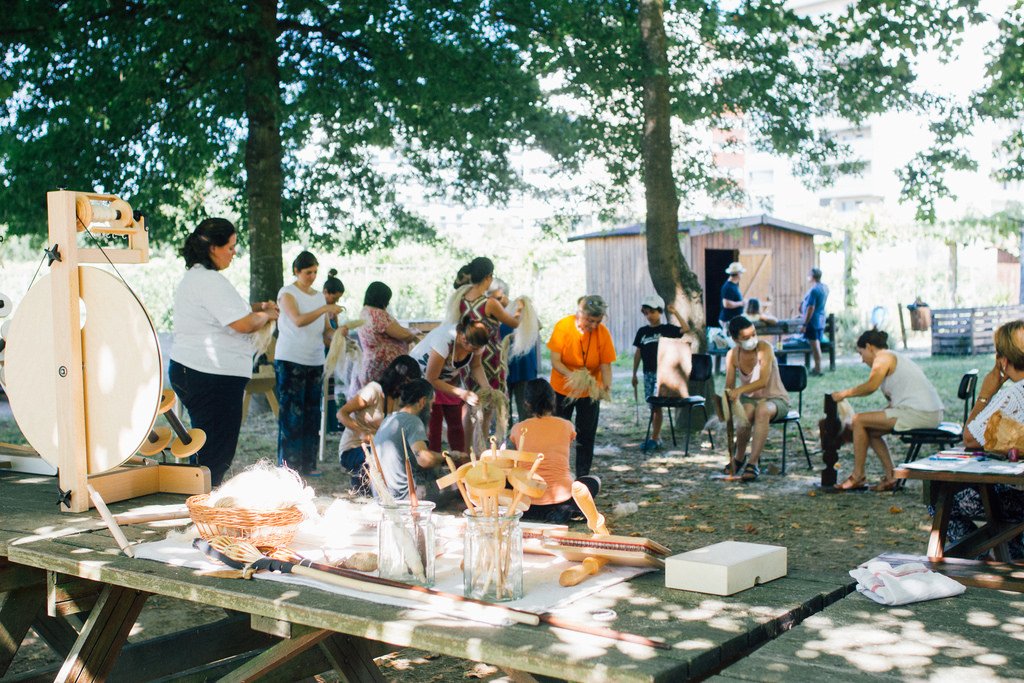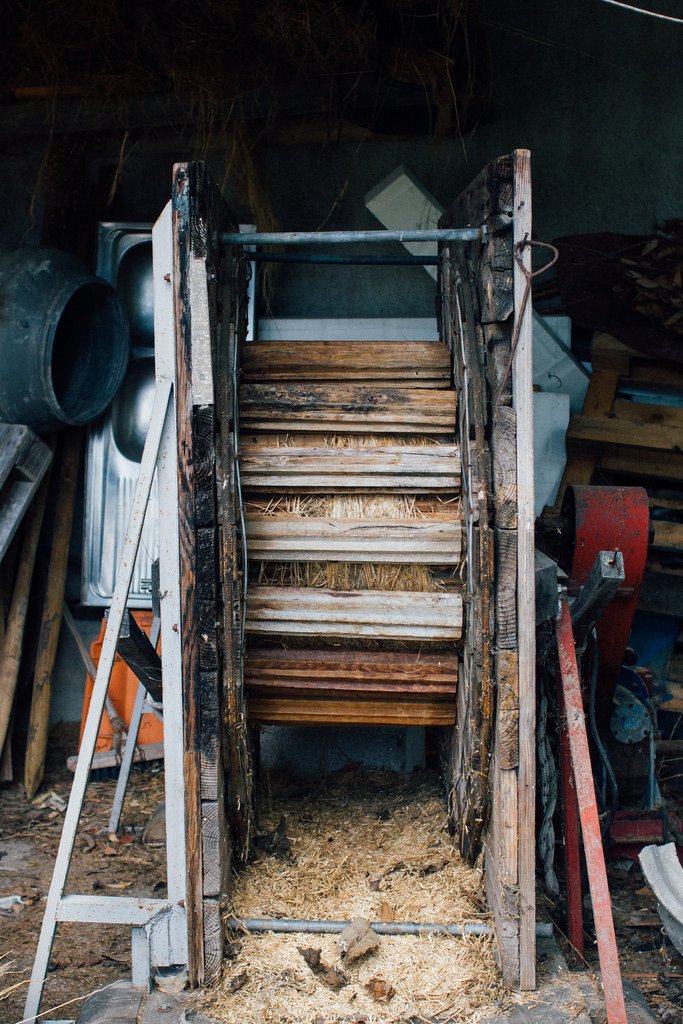Blog

The Flax long course - final day
We sowed, saw it grow, harvested, rippled, retted, dried and ground our own flax in a two and a half months time. This was the easy part of flax growing, the hardest one was yet to come and that is the one that demands us to scutch, comb and spin our flax.

Glorious flax break
This is one of the rare flax grinders still working in our country and one of the only two that work with an engine (the third I know of that is still working is powered by animal traction).

Slow and steady
This year the weather was radically different from last year's during the flax season: lots of rain and lower temperatures that have been raising slow and steady.

At the shop: books about flax!
Finding books on flax cultivation written in Portuguese is not easy. Most of the ones I find that are actually useful for practice were published in the first half of the 20th century and are rarities, really.

Flowering Flax
Most definitely, the most beautiful time in flax growing: the flowering. The plants already have their maximum height, and they get the typical purple flowers in the morning, that then fall throughout the day.

The growing Flax
A week after sowing and it seems none of the catastrophes I feared occurred. The birds didn’t flood in to eat the seeds, we didn’t bury them too deep for them to sprout, and we didn’t kill them from lack of water.

Flax growing advice from Eng. Flávio Martins
There are books that are more extense on the flax subject, but I consider these written in the 1940’s by Eng. Flávio Martins something special because they had a clear mission: to ensure that the farmers that were growing flax for EFANOR had all the necessary information to produce good quality crops.

Here they are!
Four days after the sowing, the little galego flax sprouts started peeking out.

Flax - Sowing
The research I've done so far has made me realize how complex this little plant is and how the quality of the flax we'll get depends almost exclusively on what is done at the time of sowing, and well, also on a series of meteorological factors that we can't control.

Flax. But which flax?
All cultivated flax belongs to the Linum usitatissimum L. species, of which there are hundreds of different varieties. Some of these varieties are commercial and it is these that are currently used for the commercial production of flax for various purposes, as they are more productive.

